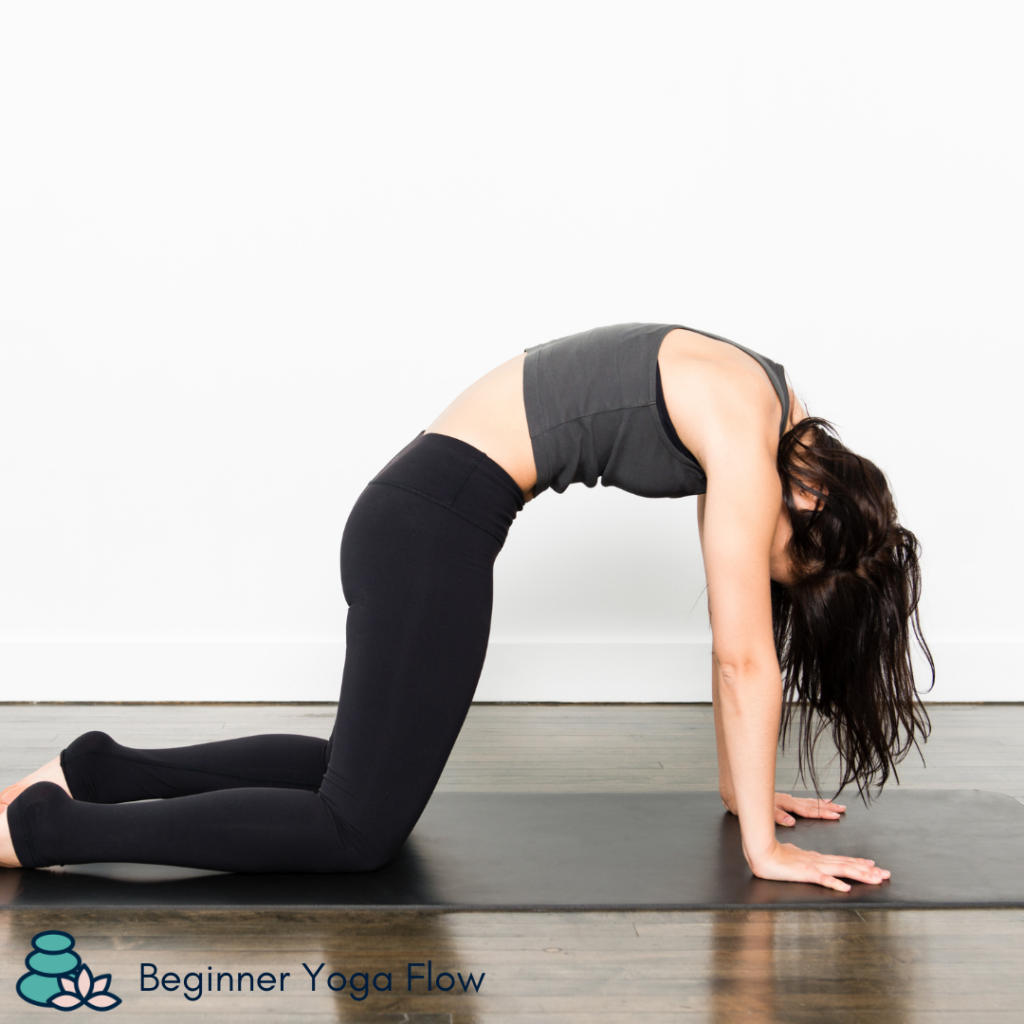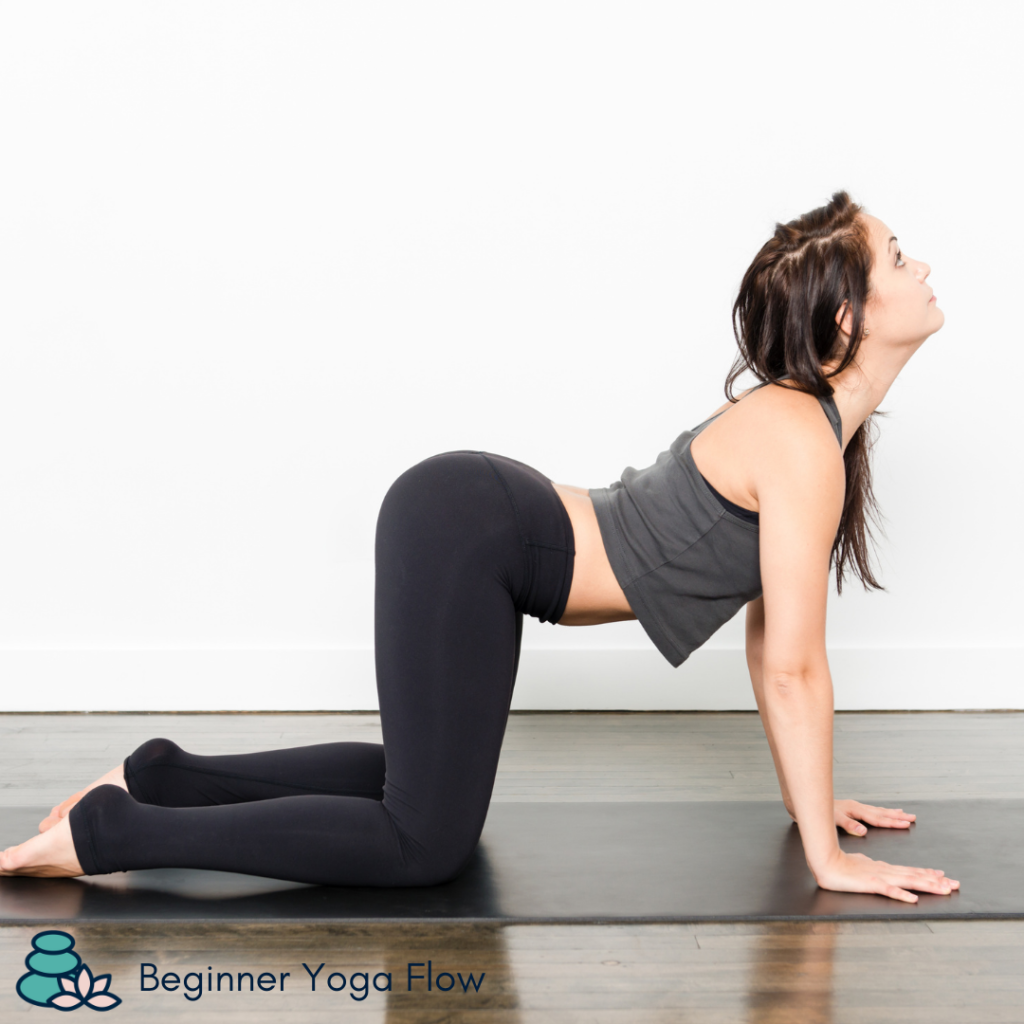Getting to the gym or the yoga studio for a 75 minute yoga class is not always possible and can sometimes feel more like a chore than a treat.
The great thing about yoga is that you don’t need to make it to a class to reap the benefits of a yoga practice. Because yoga doesn’t require any fancy equipment it’s simple to get started with yoga at home.

It’s also important to remember that it’s better to do 20 minutes of yoga a day then to do one one-hour yoga class a week.
So if you don’t have the time to attend yoga classes daily or you’re not ready to practice at a studio or gym, an at home yoga practice is your best option.
So how do you get started with a yoga practice at home?
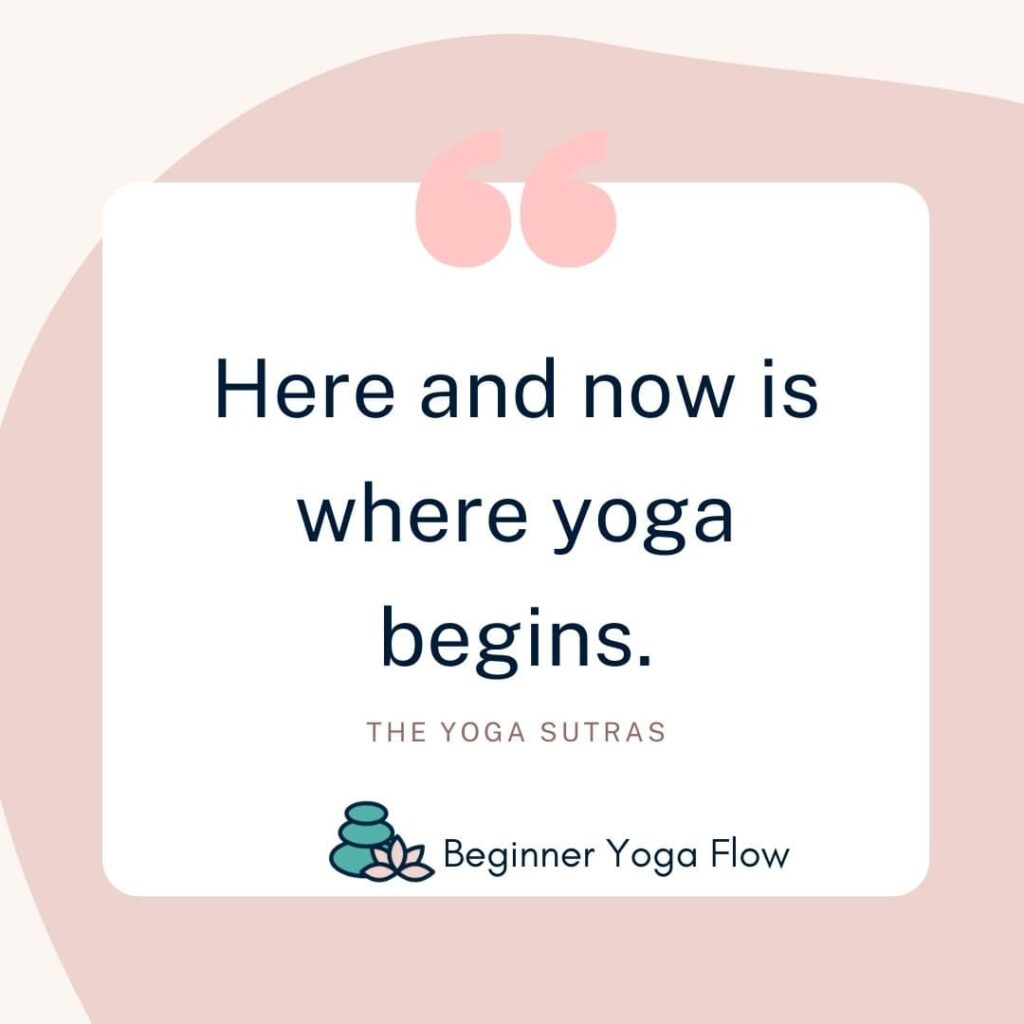
1. Create a space
Find a space free from distractions to practice yoga and declare it your own. It should be big enough to roll out your yoga mat and stretch your arms out wide. It should also be free of clutter.
The importance of creating a yogic environment will benefit your practice. A clear and calm space will help to settle the mind and allow you to focus on your practice.
You’ll also want to store your props in this space so you have them handy when you get on your mat. (Learn More about what props you need here). You technically don’t need anything but your body to practice yoga, but beginners will find it easier and safer to do a yoga practice with props like straps, blocks and bolsters.
If you’re planning on streaming a class, figure out what tech you’ll need ahead of time! Will you cast from your phone onto a TV or will you be using a laptop or computer? Getting this all set up ahead of time will save you time (and frustration) when it’s time to get on your mat. Check out the BeginnerYogaFlow Youtube channel for practices designed just for beginners.
2. Have a plan
Think about the type of yoga you would like to practice and for how long. Do you want a quick morning flow that will get you energized? Or are you looking for a yoga practice that will help you destress after a long day?
Once you know what your goal is for your practice you can either get on your mat and practice your own flow by just listening to your body, or you can follow along with a yoga video or live virtual class. Online yoga classes have come a long way and there are so many amazing resources to guide you through your practice safely.
3. Find a time in the day and schedule it
Look at your daily schedule and figure out a window of time that you can commit to. Even if that time isn’t the same time everyday. Perhaps this means waking up a little earlier or making yoga a part of your bedtime routine. Remember, all you need is 20 minutes a day to reap the benefits of yoga.
Now, block this time out on your schedule just like you would any other appointment. This will help you keep your commitment to yourself.
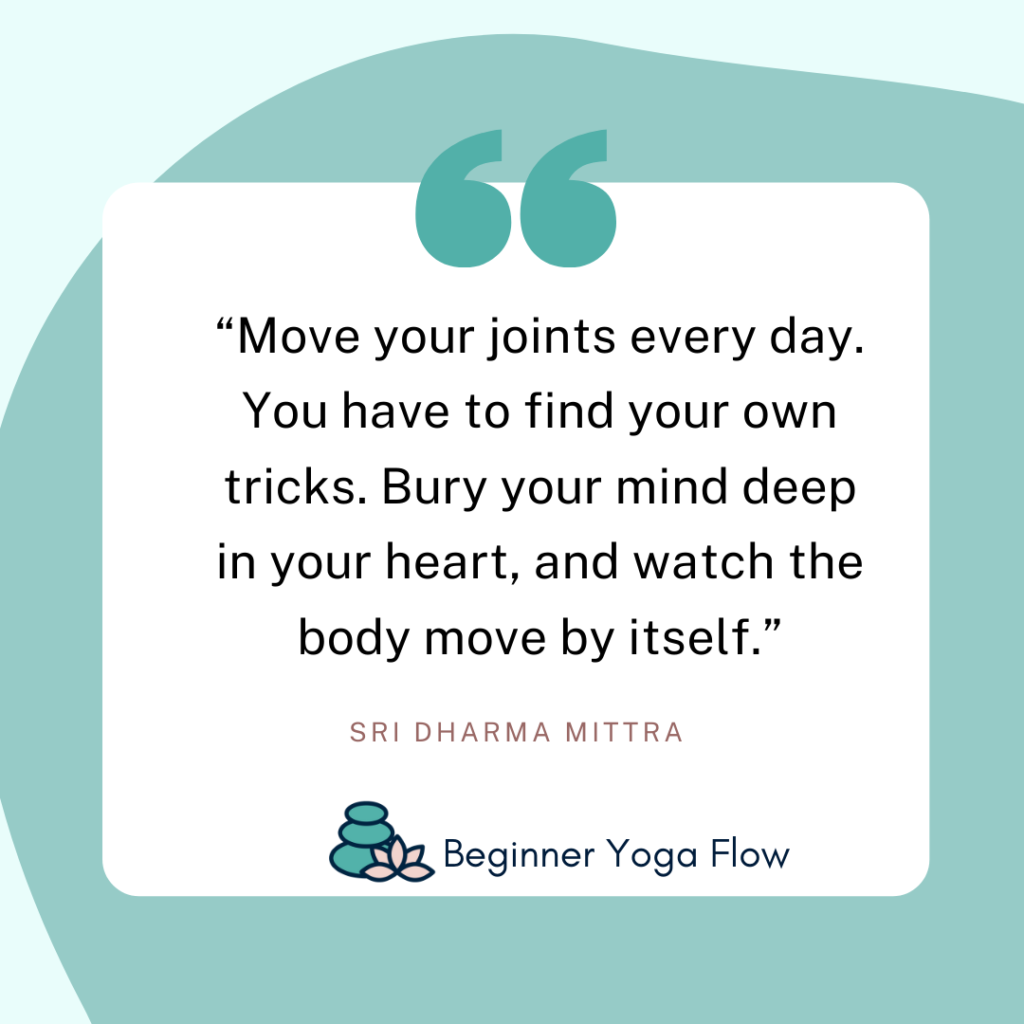
4. Know Your Limits
The beauty of practicing yoga at home is that you can really focus on your limits and listening to your body. Often when we attend a yoga class, we may find ourselves in competition with the teacher, other students or even ourselves. Practicing yoga at home helps to remove that competition and is an amazing way to turn inward and focus on the way our body moves and how it feels during our practice.
5. Don’t forget about Pranayama and Savasana
It’s so easy to skip Pranayama (breathing practices) and Savasana (rest after the practice) in order to move on with your day. But don’t skip these! They are just as important to your yoga practice as all the asanas you just did!
A good rule of thumb for Savasana is that it should be 10% of your practice time. If you practice for 60 minutes, you should rest in savasana for 6 minutes. If your practice is 20 minutes, you should rest in savasana for 2 minutes.
Your breath practice doesn’t have to be anything complicated either. A great breath practice for beginners is to practice even inhalations and exhalations. You inhale for a count of 5 and exhale for a count of five for 5-10 breath cycles. This can be done at the beginning or the end of your practice.
A Simple At Home Beginner Yoga Flow
Cat and Cow
Beginning on the hands and knees, inhaling as you arch your back and bring your chest and chin forward coming in to cow. On the exhale, rounding the back towards the ceiling bringing the chin into the chest. Repeat for 5-10 breath cycles (inhale, exhale)
Spinal Balance

Coming back into a neutral spine on hands and knees, inhaling lifting the left arm and right leg reaching the fingertips forward and pushing back through the heal. Exhaling to release back down to all fours. inhaling lifting the right arm and left leg reaching the fingertips forward and pushing back through the heal. Repeat 4-6 times on each side.
Downward Facing Dog
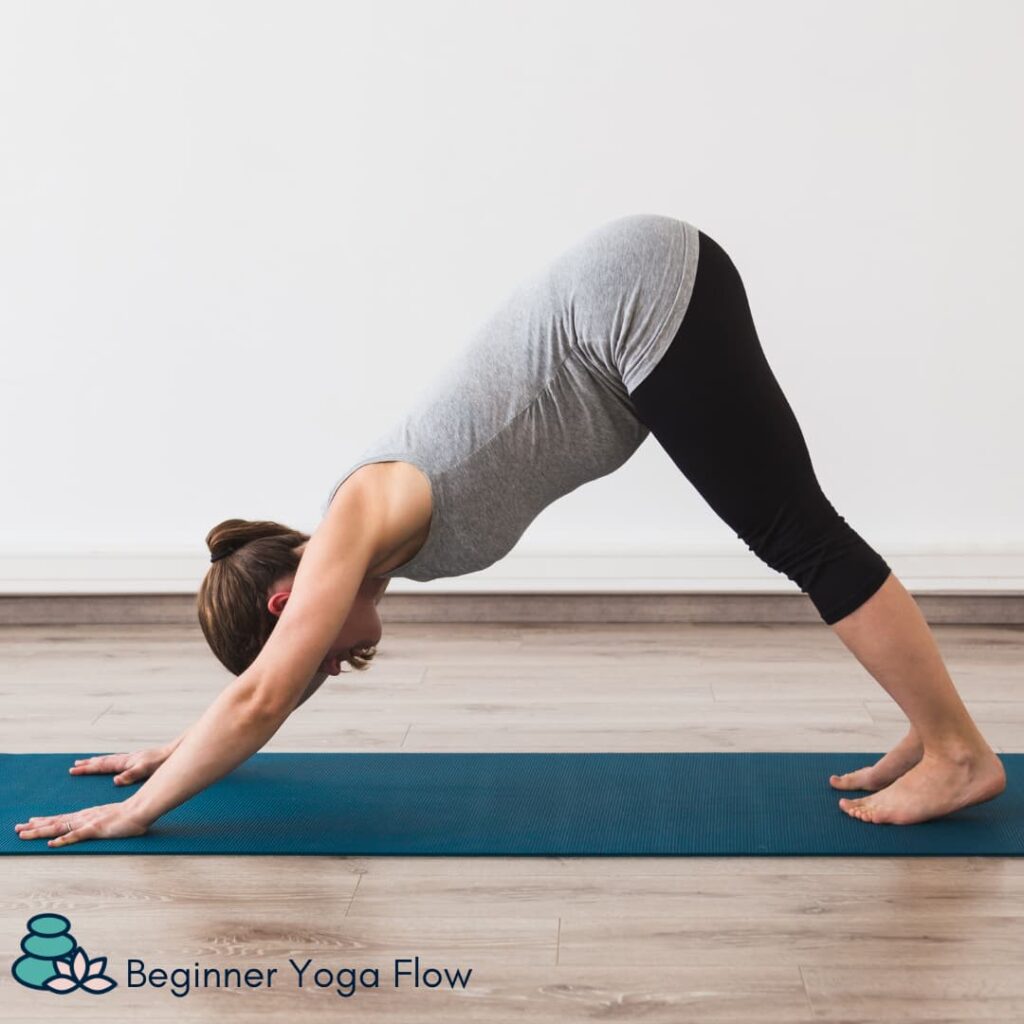
From hands and knees, tucking the toes in and lifting the hips up coming into downward facing dog by creating an upside down v with your body. Hands are shoulder width apart, ears are between the arms and gaze is towards the toes. Keeping a slight bend in the knees. Perhaps taking a moment to pettle out the feet
Low Lunge
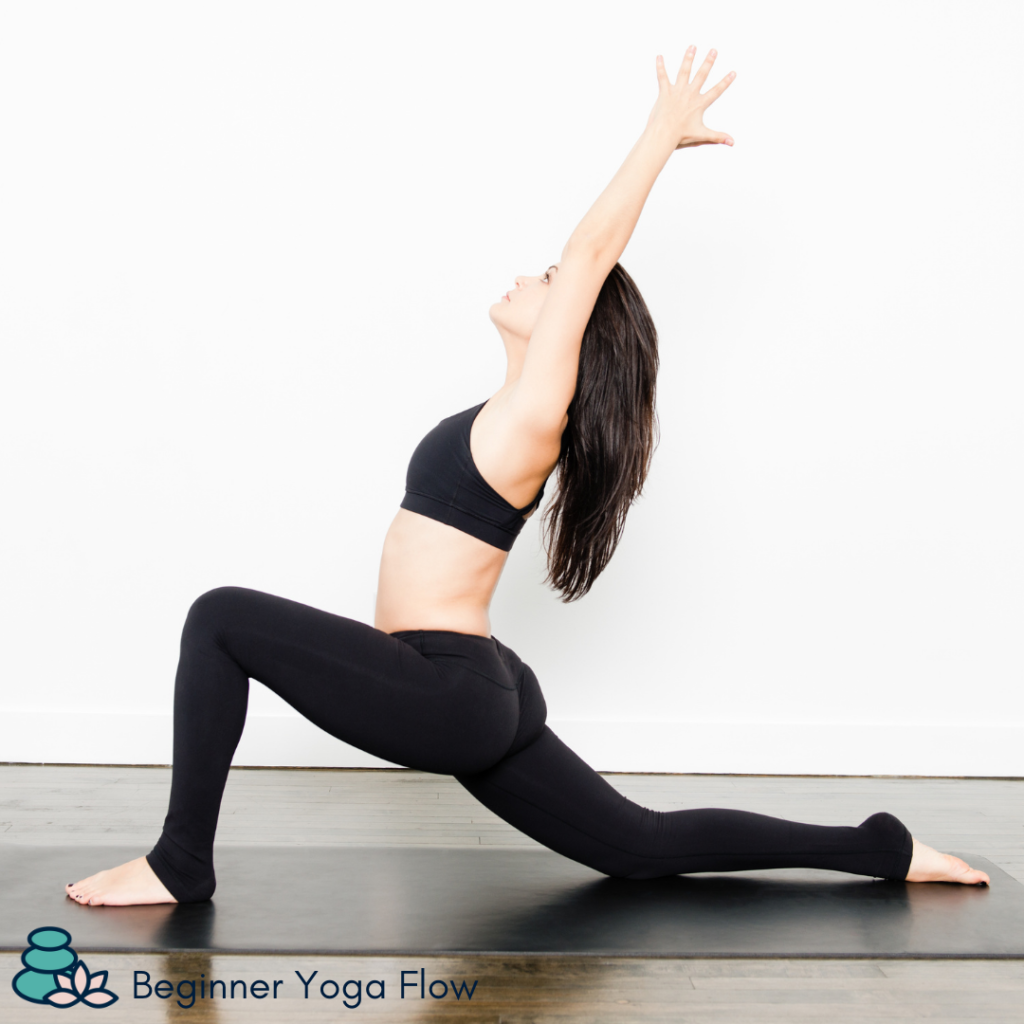

Stepping the right foot forward and framing the foot with your hands. Making sure the knee is above the ankle, not past the ankle. Stretching back through the left heal, chest is open and bright.
Warrior 1
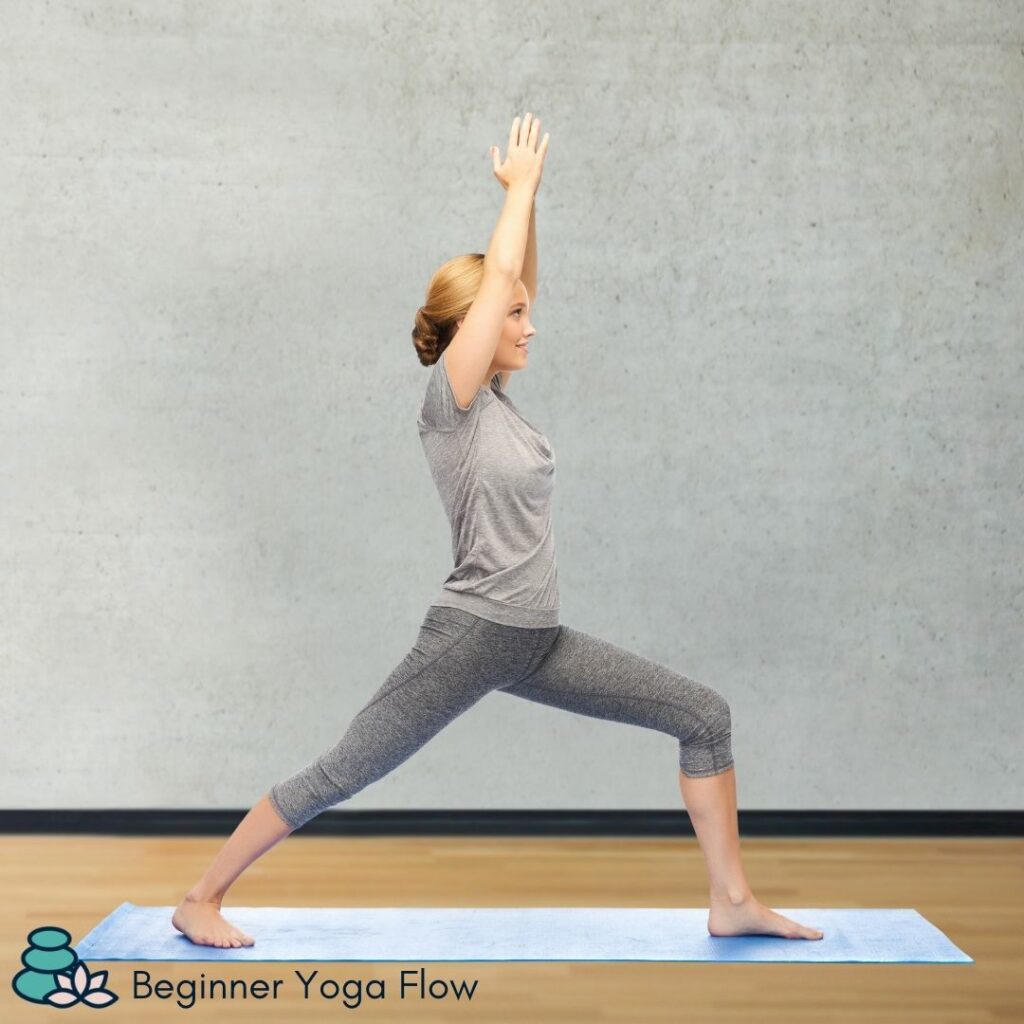

Keeping the right knee bent and turning the left foot in 45 degrees and rising up into Warrior 1. Chest and hips are facing forward with the arms reaching up. Checking to make sure the right knee is over the right ankle, and grounding down through the outer edge of your left foot.
Warrior 2
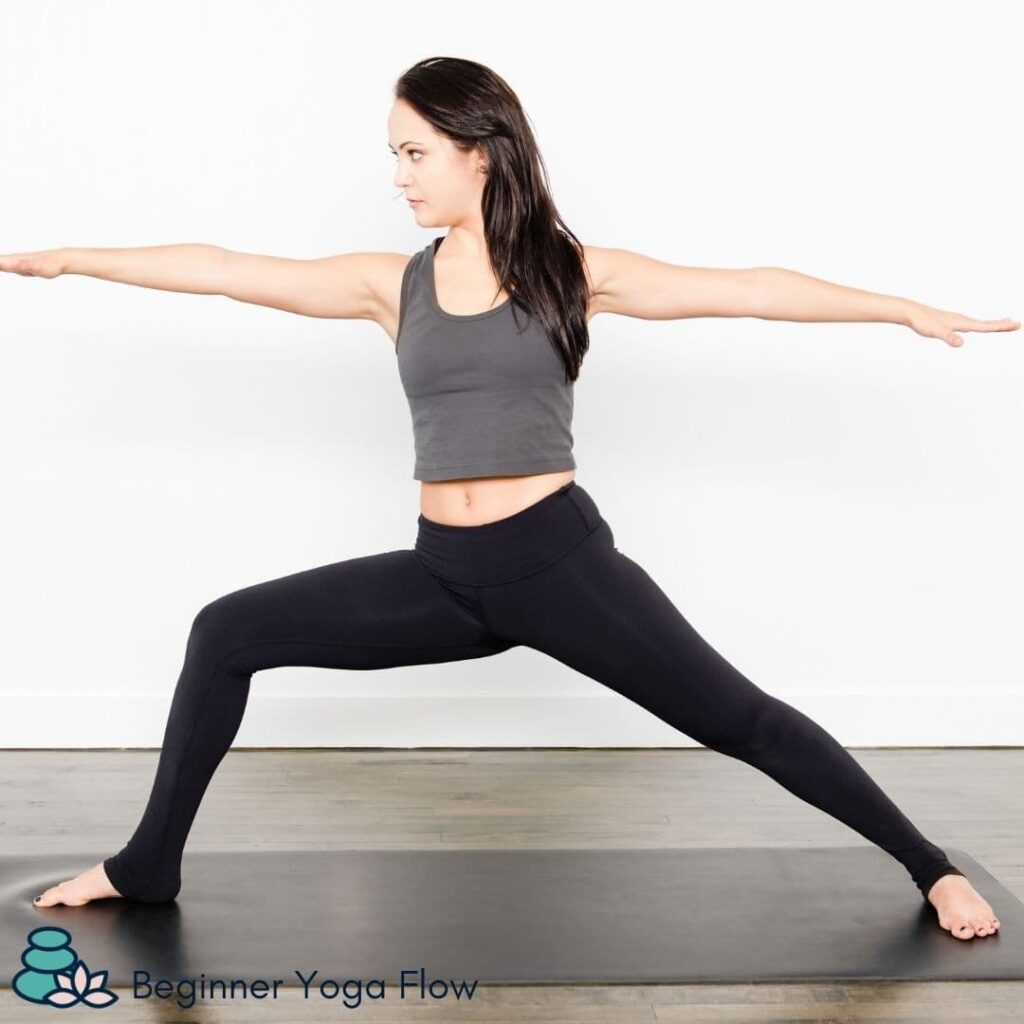

Opening up wide into warrior 2. Arms are reaching in opposite directions, heals are aligned, spine is long. Again, watching the front knee making sure it is aligned with the front ankle.
Extended Triangle
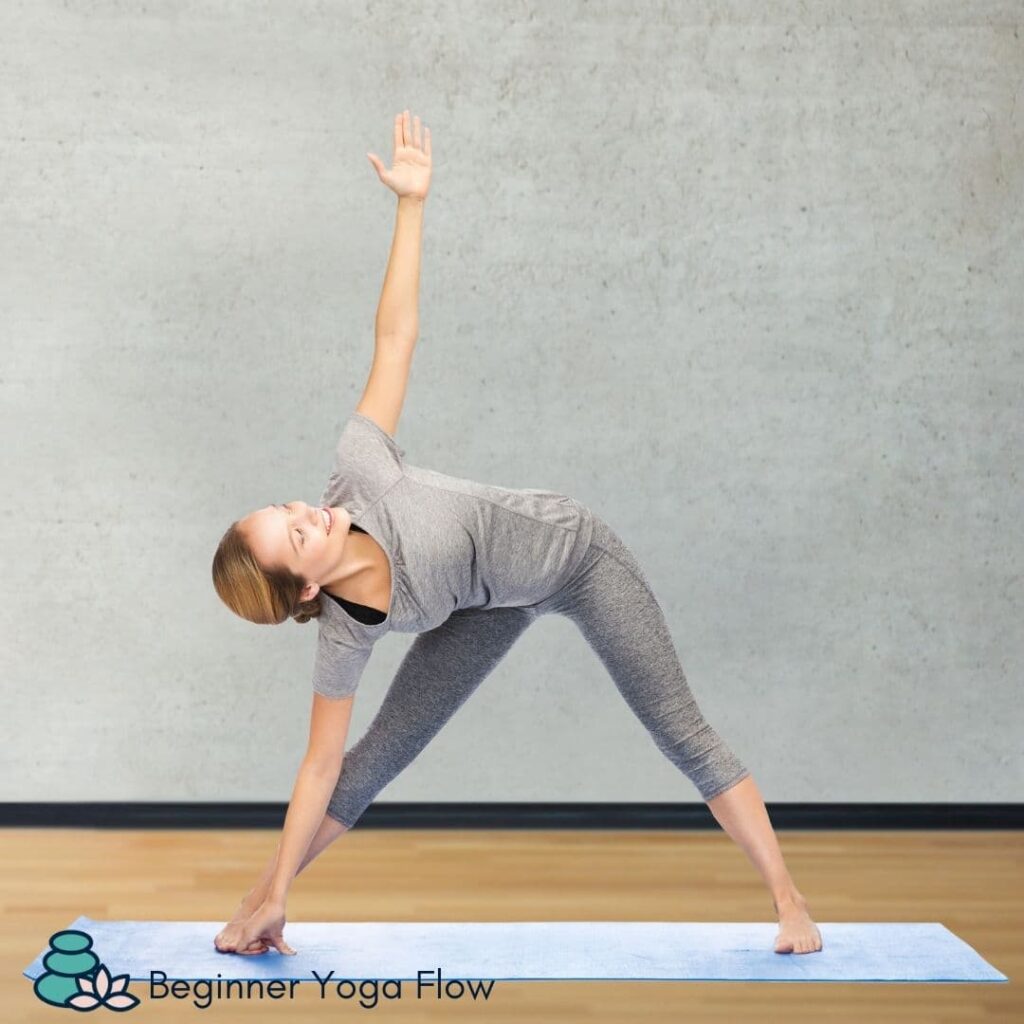

Straightening the right leg, reaching forward with the right fingertips until you can’t go any further than bringing your hand onto your shin, ankle or to the floor. Reaching the left arm up, keeping the shoulders stacked and feeling as if you are pressed between two panes of glass.
Downward facing dog



Stepping back into downward facing dog and taking a breath
Chaturanga


Coming into a plank pose, shifting forward slightly on the toes and slowly lowering down, keeping the shoulders, elbows and hips in line. Elbows are close to the body. Lowering all the way down to the floor.
Cobra
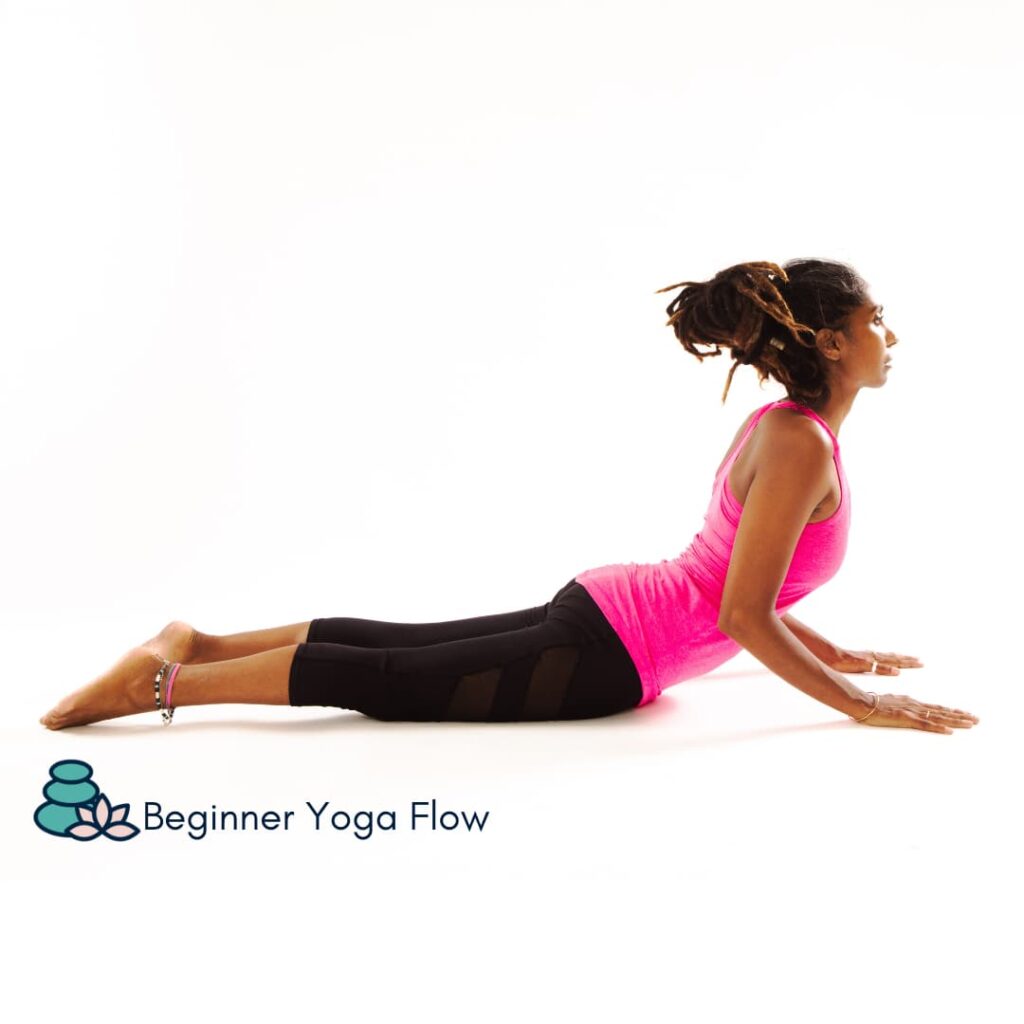

Keeping the hands flat on the floor, and inhaling lifting the chest up, looking straight ahead, keeping the hips knees and feet in line with the legs engaged and exhaling releasing.
Child’s pose
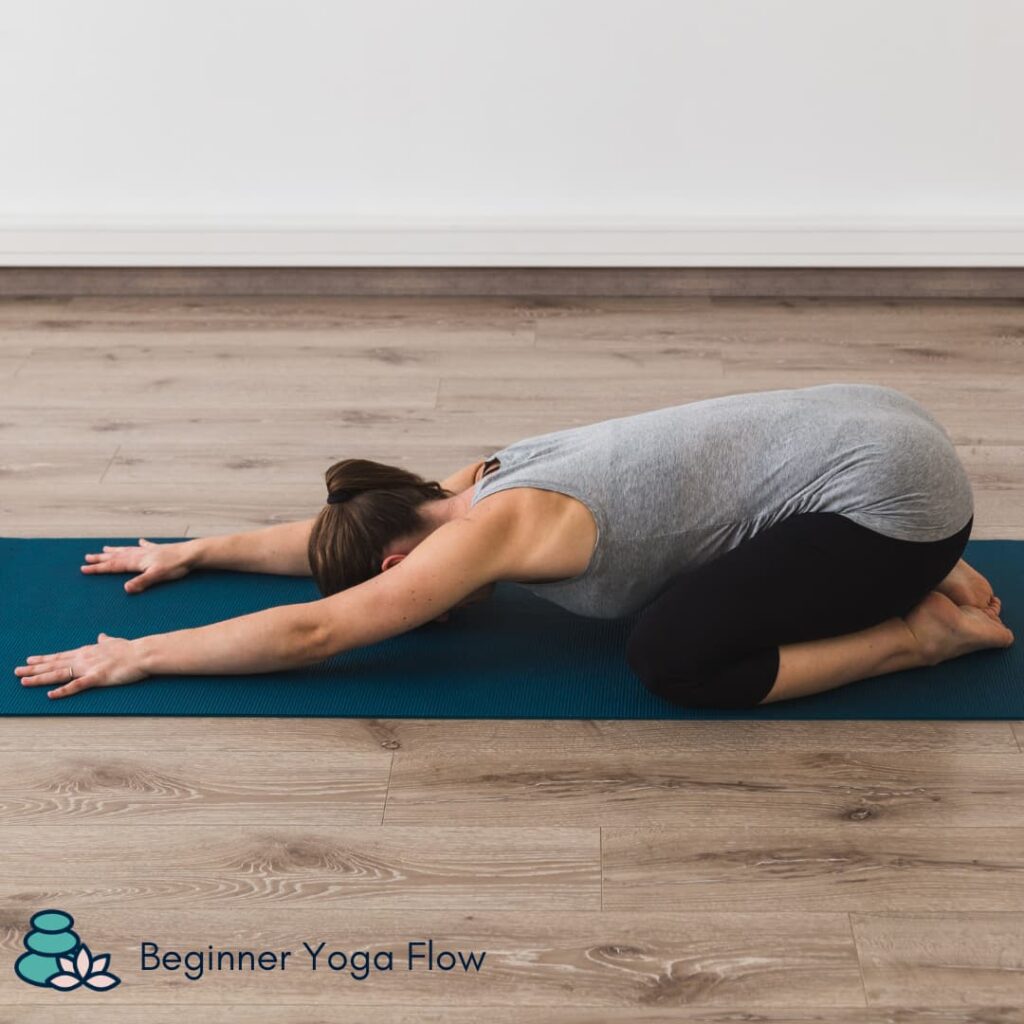

Rising up onto hands and knees and exhaling to sit on your heals and bringing your arms along your side. Taking a few breaths here
Repeat on the other side.
Looking for Beginner Class Videos? Check out the Beginner Yoga Flow Video Class Library.

